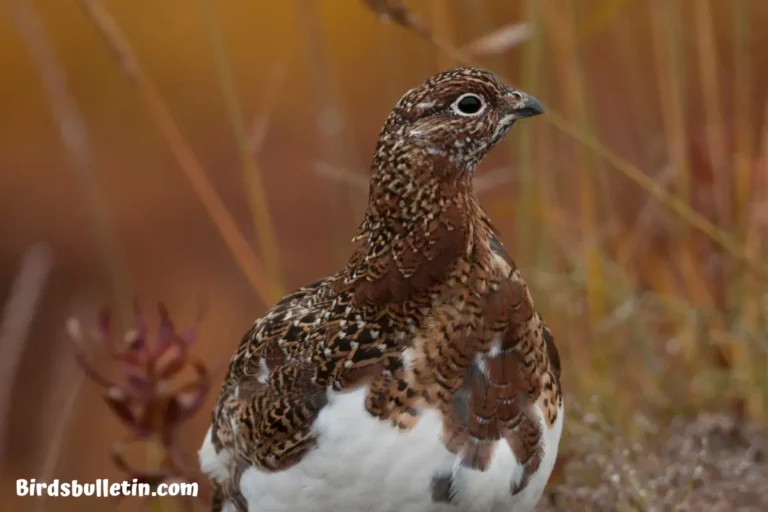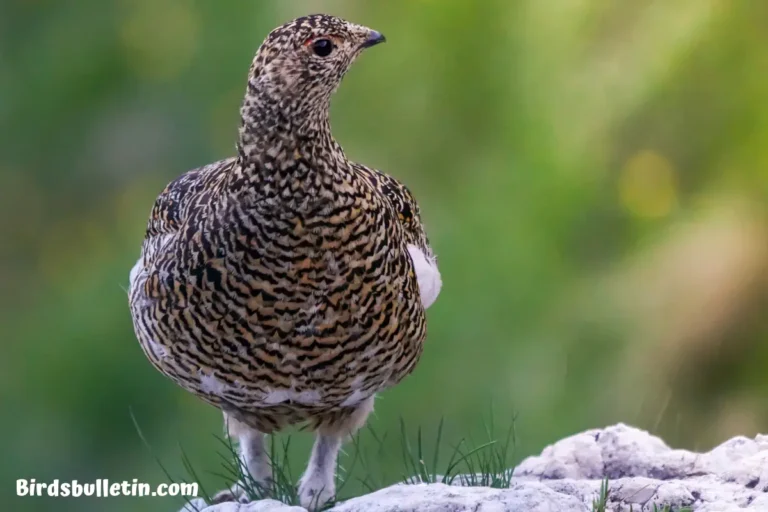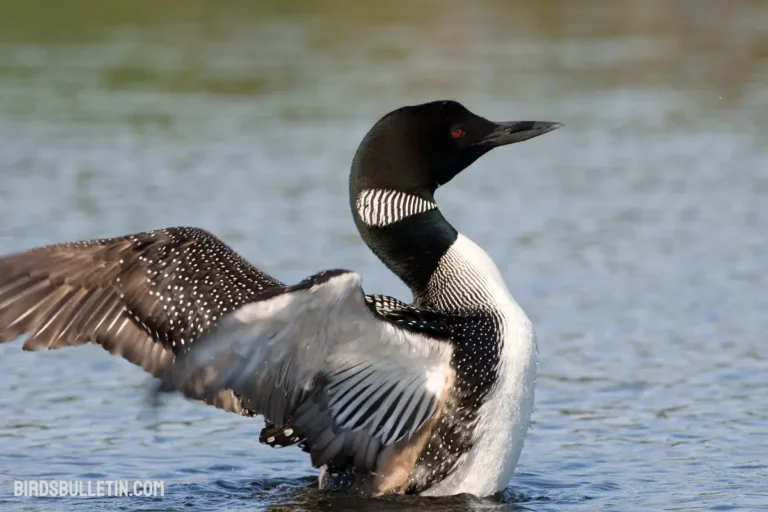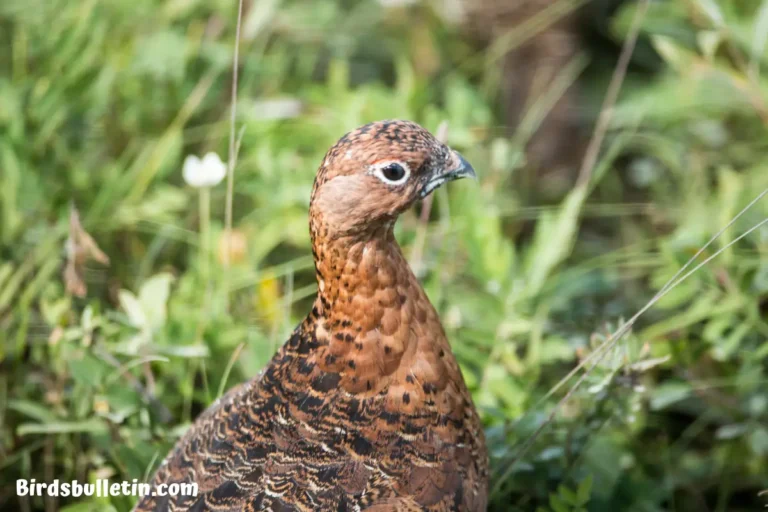Willow Ptarmigan: Migration, Behavior And More
Ptarmigan derives from the Gaelic word ‘tarmachan’. Willow refers to one of its common habitats – willow thickets and shrub lands found on the tundra. That is why this bird is called Willow Ptarmigan.
Interested in similar topics on birds overview:
Identification of Willow Ptarmigan
The Willow Ptarmigan is a medium-sized grouse species that lives in Arctic and subarctic regions. Some key identification features include:
- Plumage is brownish in summer, turning completely white in winter except for a black tail.
- Has feathered feet adapted for walking on snow
- Male has a red comb over the eye which becomes larger during breeding season.
- Produces a rattling or croaking call.
- Slightly smaller than a Rock Ptarmigan.
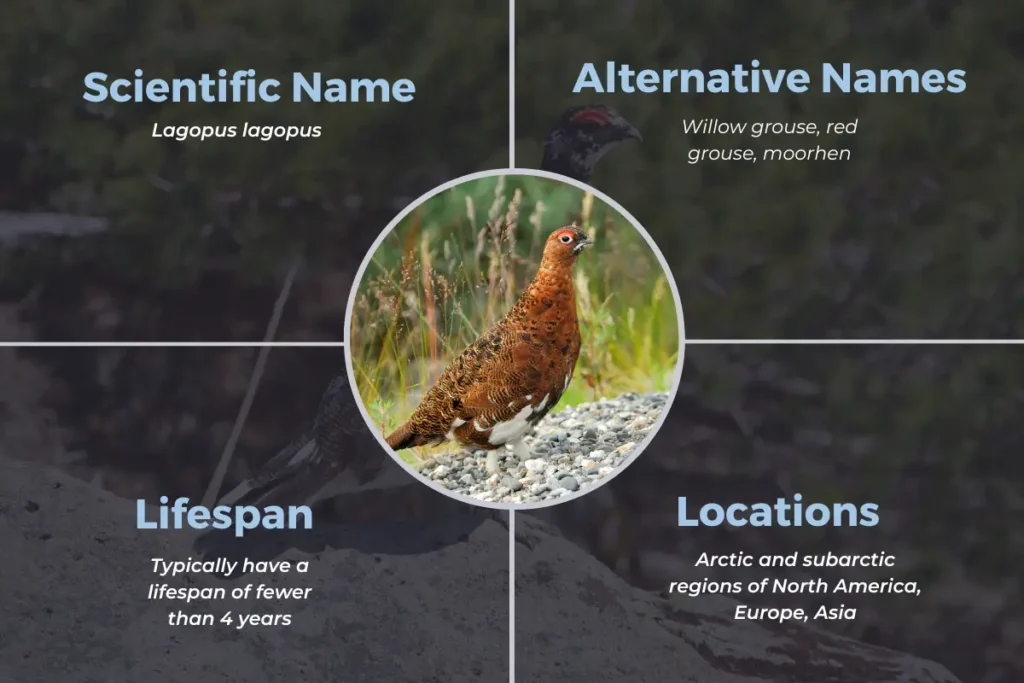
Willow Ptarmigan Profile
Here is a table summarizing key facts about the Willow Ptarmigan:
| Name | Details |
|---|---|
| Scientific Name: | Lagopus lagopus |
| Alternative Names: | Willow grouse, red grouse, moorhen |
| Plumage Color: | White in winter, mottled brown/black in summer |
| Lifespan: | Typically have a lifespan of fewer than 4 years |
| Wingspan: | 24-26 inches |
| Weight: | Within 1-2 pounds |
| Size: | Small, about 35-44 cm (13.4-17.5 inches) |
| Diet: | Buds, catkins, flowers, berries, insects |
| Breeding Season: | Spring and summer |
| Locations: | Arctic and subarctic regions of North America, Europe, Asia |
| Threats | Habitat loss, climate change, pollution, overhunting |
Subspecies
With variance in appearance, 16 recognized subspecies of Willow Ptarmigan located across different regions. Due to seasonal plumage changes and varying colors, genetics confusion arises among them , especially in summer.
The recognized subspecies include:
- L. l. Alascensis (Swarth, 1926) – Found in Alaska.
- L. l. Alba (Gmelin & JF, 1789) – Inhabits northern Canada.
- L. l. Alexandrae (Grinnell, 1909) – Found in Alaska and British Columbia.
- L. l. Alleni (Stejneger, 1884) – Native to Newfoundland.
- L. l. Brevirostris (Hesse, 1912) – Resides in the Altai Mountains and Sayan Mountains.
- L. l. Koreni (Thayer & Bangs, 1914) – Spreads from Siberia to the Kamchatka Peninsula.
- L. l. Kozlowae (Portenko, 1931) – Inhabits northern Mongolia and southern Siberia.
- L. l. Lagopus (Linnaeus, 1758) – Found in Scandinavia, Finland, and northern Russia.
- L. l. Leucoptera (Taverner, 1932) – Native to northernmost Canada and its Arctic islands.
- L. l. Maior (Lorenz T, 1904) – Resides in north Kazakhstan and southwest Siberia.
- L. l. Okadai (Momiyama, 1928) – Inhabits Sakhalin Island.
- L. l. Rossica (Serebrovski, 1926) – Found in Baltic states and central Russia.
- L. l. Scotica (Latham, 1787) – Native to Britain and Ireland.
- L. l. Sserebrowsky (Domaniewski, 1933) – Spreads from northeastern Mongolia to southeast Siberia and northeastern China.
- L. l. Ungavus (Riley, 1911) – Resides in northeastern Canada.
- L. l. Variegata (Salomonsen, 1936) – Found in Trondheim, Norway.
This bird often hybridizes with black grouse, hazel grouse, western capercaillie, spruce grouse, and rock ptarmigan, contributing to their intricate evolutionary tapestry.
Population
The global population of Willow Ptarmigan is estimated between 34-40 million individuals. Trends show the population decreasing in some parts of its range such as Scotland, but remaining stable across North America and Greenland.
The species is hunted recreationally and subsistence hunting occurs in some regions like Alaska.
Migration
Willow Ptarmigan undergo altitudinal migration, moving to lower elevations in winter to find food and shelter. They migrate up to 75 km between wintering and breeding grounds.
Northern populations that experience extreme winters may migrate south. There is evidence of winter migration between Iceland, Greenland, Labrador, and Newfoundland.
Behavior
- Forms pairs during the breeding season, with males defending a territory.
- Nests on the ground in dense vegetation, laying up to 12 eggs. Young can fly for 12-14 days.
- Feeds on buds, leaves, flowers, berries of willows, and other plants. Also eats insects in summer.
- Spends most of the day foraging. More active in the mornings and evenings.
- Roosts in snow burrows at night for insulation. Males may roost in trees.
- Molts into white winter plumage to provide camouflage against predators like foxes, and birds of prey.
Human Connections
Throughout history, Willow Ptarmigans have had cultural and economic significance for indigenous communities.
- Willow Ptarmigan has been an important food source and material for clothing for Arctic indigenous peoples.
- They are a popular game bird, hunted by recreational hunters across their range. Some indigenous groups in Canada and Alaska continue subsistence hunting.
- Ptarmigan species are the national bird of Newfoundland and Labrador, Canada.
Conservation Status
The Willow Ptarmigan is classified as Least Concern on the IUCN Red List. They have a large range and population and are not currently considered threatened. However, some localized declines have occurred due to overhunting and habitat change.
Frequently Asked Questions
01. Do Willow Ptarmigans migrate long distances?
Willow Ptarmigans exhibit seasonal movements, primarily driven by changes in weather and food availability. While they do migrate to find suitable breeding and feeding grounds, their migrations are not as extensive as some other bird species.
02. What eats Willow Ptarmigans?
Natural predators include foxes, lynxes, coyotes, wolves, snowy owls, golden eagles, and even bears. Humans across the Arctic also hunt ptarmigan for food.
03. Why does its plumage change color?
Seasonal color molts provide protective camouflage from predators. White feathers conceal ptarmigan against the snow while brown/black plumage blends into tundra vegetation and rock fields during snow-free months.
References:
- BirdLife International 2016. Lagopus lagopus. The IUCN Red List of Threatened Species 2016.
- Martin, K. and Wiebe, K.L. 2004. Coping mechanisms of alpine and arctic breeding birds: extreme weather and limitations to reproductive resilience. Integrative and Comparative Biology 44: 177-185.
- Sandercock, B.K., Martin, K. and Hannon, S.J. 2005. Life history strategies in extreme environments: Coopers Hawks in the Patagonia Mountains of Arizona. Ecology 86: 2156-2173.
- Watson, A. and Moss, R. 2008. Grouse: The Natural History of British and Irish Species. Collins.


